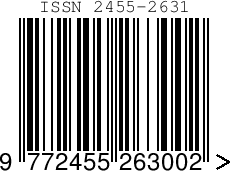Imp Links for Author
Imp Links for Reviewer
Research Area
Subscribe IJSDR
Visitor Counter
Copyright Infringement Claims
Indexing Partner
|
Published Paper Details
|
|
| Paper Title: | A Comparative Study on Stability of Hot and Cold Bituminous Mix prepared using Rap Aggregates and Concrete Waste |
| Authors Name: | RUSHIKESH BABURAO THORAT , AKRITI NAYNANAND SINGH , GAJANAN RAMESH NALLAMADGE , SHUBHAM HARIDAS DARANDALE , SHARANABASAPPA KORI |
| Unique Id: | IJSDR2305078 |
| Published In: | Volume 8 Issue 5, May-2023 |
| Abstract: | In light of this, it is necessary to elevate the road levels at the entrances to these structures, rendering the current pavement materials unnecessary. In order to build a new road, a layer of the current bitumen pavement must first be removed from the existing road. This process occurs on a massive scale every year. It may benefit the environment and the building industry economically and environmentally to use a binding material like reclaimed asphalt pavement to replace some natural aggregates. Additionally, it has become a significant issue to dispose of aggregates and other binder materials because they are often burned, which pollutes the environment. Waste aggregates are used in bituminous mixes, and it has been shown in several studies that these aggregates improve the mix's characteristics as well as address disposal issues. Asphalt's viscoelastic nature means that seasonal changes in temperature and the type of loading they undergo have a big impact on how it behaves. Due to the behaviour of the asphalt binder, there are many different forms of flexible pavement failure and distress, the most prevalent of which are rutting and fatigue cracks. The purpose of the current study is to determine whether these reclaimed asphalt pavement (RAP) materials, also known as redundant pavement materials, are appropriate as potential subbase or base course materials for flexible pavement. Various laboratory experiments will be conducted to analyse the materials' strength and durability factors, and the outcomes of hot and cold bituminous mixes with waste concrete will be compared. Reviewing the experience with RAP throughout the world, identifying common implementation problems, and developing strategies to guarantee a thorough approach to RAP use are all goals of this article. |
| Keywords: | Cold Mix, Hot Mix, RAP, Stability Test, Bitumen, Aggregates |
| Cite Article: | "A Comparative Study on Stability of Hot and Cold Bituminous Mix prepared using Rap Aggregates and Concrete Waste ", International Journal of Science & Engineering Development Research (www.ijsdr.org), ISSN:2455-2631, Vol.8, Issue 5, page no.556 - 564, May-2023, Available :http://www.ijsdr.org/papers/IJSDR2305078.pdf |
| Downloads: | 000337070 |
| Publication Details: | Published Paper ID: IJSDR2305078 Registration ID:206195 Published In: Volume 8 Issue 5, May-2023 DOI (Digital Object Identifier): Page No: 556 - 564 Publisher: IJSDR | www.ijsdr.org ISSN Number: 2455-2631 |
|
Click Here to Download This Article |
|
| Article Preview | |
|
|
|
Major Indexing from www.ijsdr.org
| Google Scholar | ResearcherID Thomson Reuters | Mendeley : reference manager | Academia.edu |
| arXiv.org : cornell university library | Research Gate | CiteSeerX | DOAJ : Directory of Open Access Journals |
| DRJI | Index Copernicus International | Scribd | DocStoc |
Track Paper
Important Links
Conference Proposal
ISSN
 |
 |
DOI (A digital object identifier)
  Providing A digital object identifier by DOI How to GET DOI and Hard Copy Related |
Open Access License Policy
Social Media
Indexing Partner |
|||
| Copyright © 2024 - All Rights Reserved - IJSDR | |||






Facebook Twitter Instagram LinkedIn